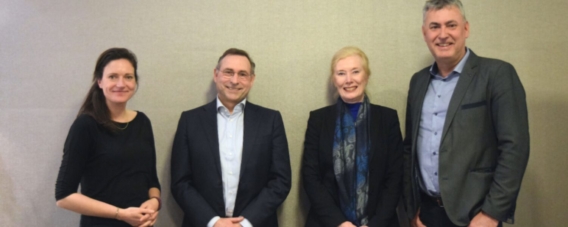From ISO to SOC 2
“ISO27001 used to be the tandard,” Peter begins. “But these days, meeting ISO27001 alone just isn’t enough anymore. ISO27001 mainly focuses on security and provides guidelines for information protection. If you meet those guidelines, you receive a certificate that’s valid for three years. SOC 2 goes a step further. It doesn’t just look at security, but it also ensures the continuity of your services to customers. This takes more than solid security measures; it also includes financial health and other key business processes. Fortunately, more and more companies are starting to see it that way too.”
Pragmatic implementation
Casper adds: “The demand for SOC 2 expertise is growing. Companies are asking us for support to implement SOC 2 effectively. Many organizations get stuck navigating the different frameworks and certifications. It starts to feel like “compliance for compliance“. Our combination of deep knowledge of the field and a hands-on approach leads to an implementation that truly moves organizations forward. Once employees see that the level of professionalism rises — and with it, the quality of service — they’re on board and ready for change.”
Self-reflection and awareness
“Many organizations believe they have everything in good shape,” Peter notes. “But SOC 2 holds up a mirror for you. It forces you to take a critical look at your own processes and identify areas for improvement. And that doesn’t just apply to security, but it covers all business operations. Implementing SOC 2 is more like entering into a long-term commitment. You need to continuously prove that you practice what you preach. It’s an ongoing process, not a one-off audit.”
Flexibility within SOC 2
Casper points out that SOC 2 actually offers flexibility: “SOC 2 isn’t a rigid system, but it’s a framework that helps companies systematically improve their processes. It’s not set in stone. You’re allowed to deviate from standard processes, as long as you document and justify those deviations clearly. That makes SOC 2 accessible for both small and large organizations. It’s important to understand that SOC 2 doesn’t dictate how you should do things, it simply requires you to prove that you’re in control.”
The use of software
“One of the benefits of SOC 2 is the freedom in how you document things,” says Peter. “Whether you use advanced software or simply write things down on paper, what matters is that everything is clearly documented. For larger companies, the use of dedicated tools often make things easier. These tools help quantify risks and track actions, giving real-time insight into the organization’s risk profile. At Yellowtail, for example, we offer the Key Control Dashboard to support this.”
Sustainable benefits
“Over time, organizations start to see the real benefits of SOC 2,” Casper explains. “Once processes are clearly defined and consistently followed, everything runs more efficiently. When incidents happen, it’s immediately clear what actions it takes to solve them. Companies that have embraced SOC 2 often say they wouldn’t want to go back. It brings structure, peace of mind, and efficiency.”
The challenges at Yellowtail Conclusion
At Yellowtail, we see these benefits too, Peter notes. “With our own Key Control Dashboard, we can easily log processes and risks. The real challenge lies in freeing up time and resources for SOC 2, especially with the day-to-day business pressures. That requires clear prioritization from management, which often leads to interesting discussions about roles and decision-making. SOC 2 helps us shift from intuitive to structured management.”
Conclusion
Peter and Casper’s shared experiences show that SOC 2 is much more than just a set of rules. It’s a mindset, one that helps organizations keep improving and stay motivated. SOC 2 leads to more efficient processes, increases risk awareness, and provides a structure that helps businesses stay truly in control.
Do you want to know how your organization can become SOC2 compliant? Get in touc with Peter de Raadt via pderaadt@davinci-conclusion.nl or Casper van Ginneken via cvanginneken@davinci-conclusion.nl.





